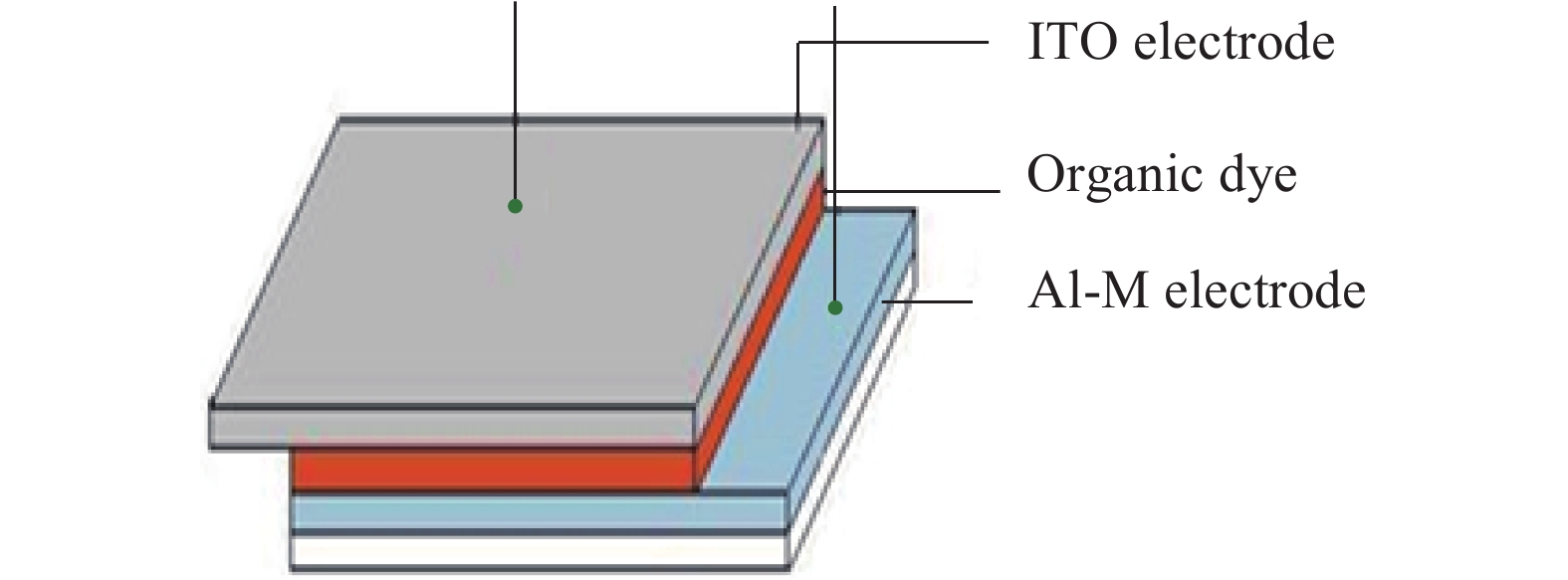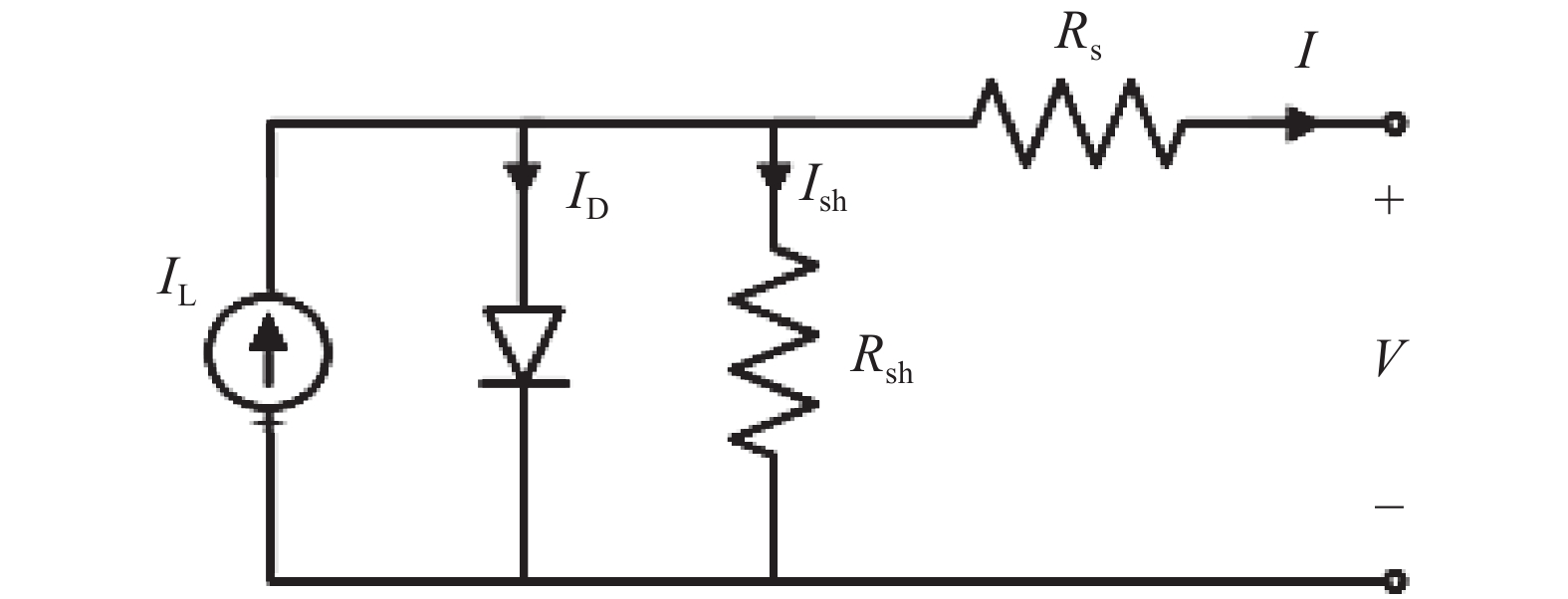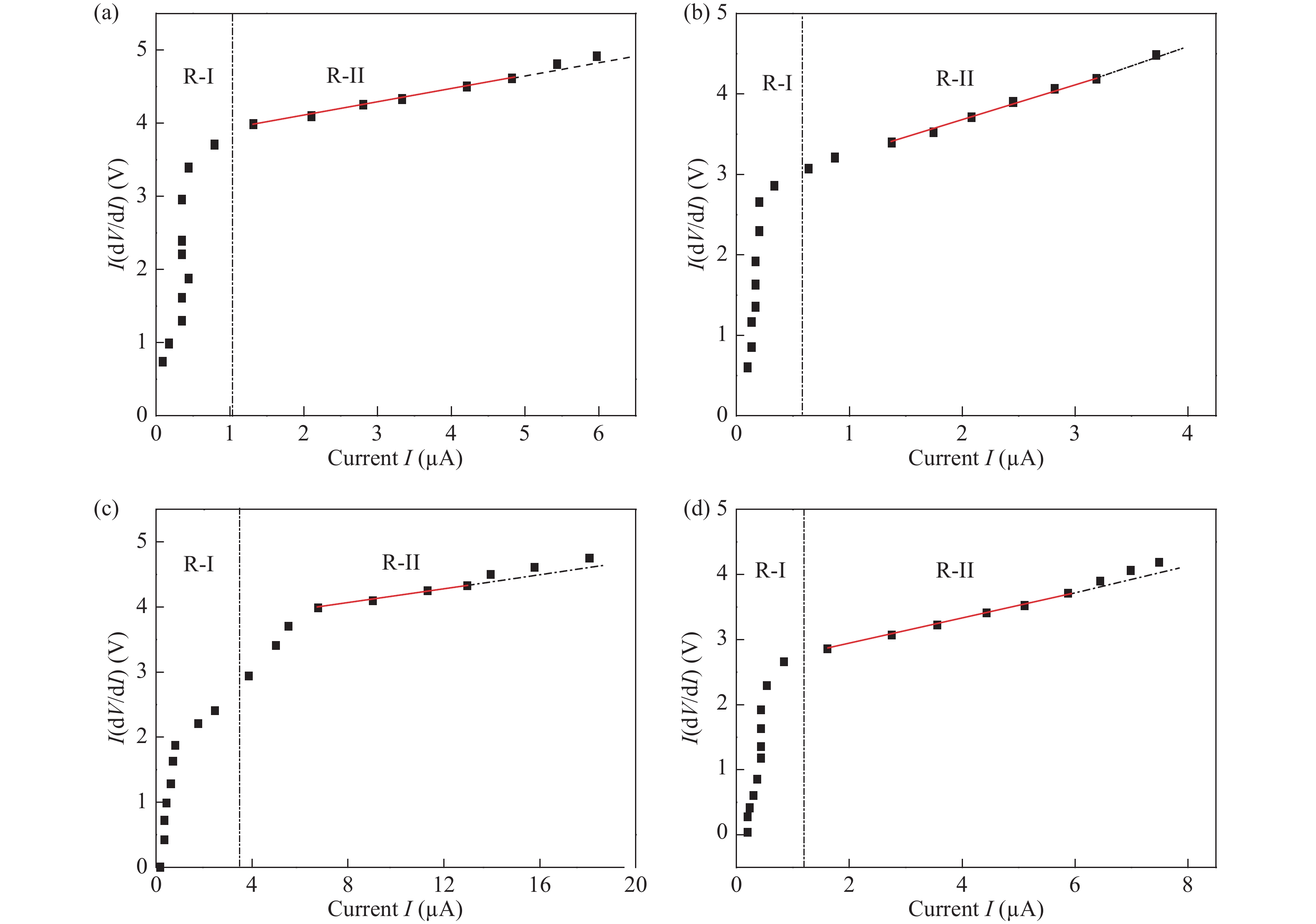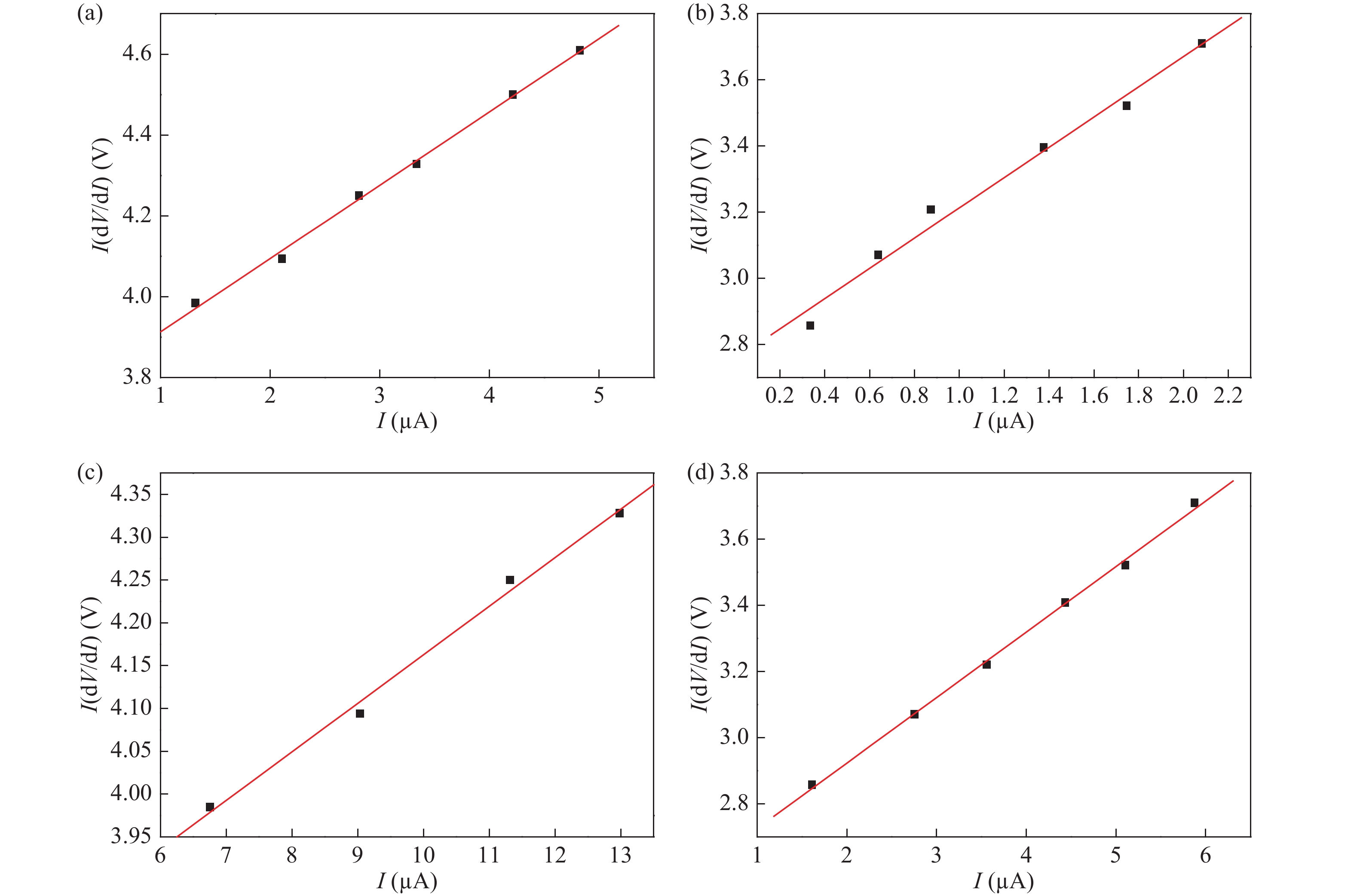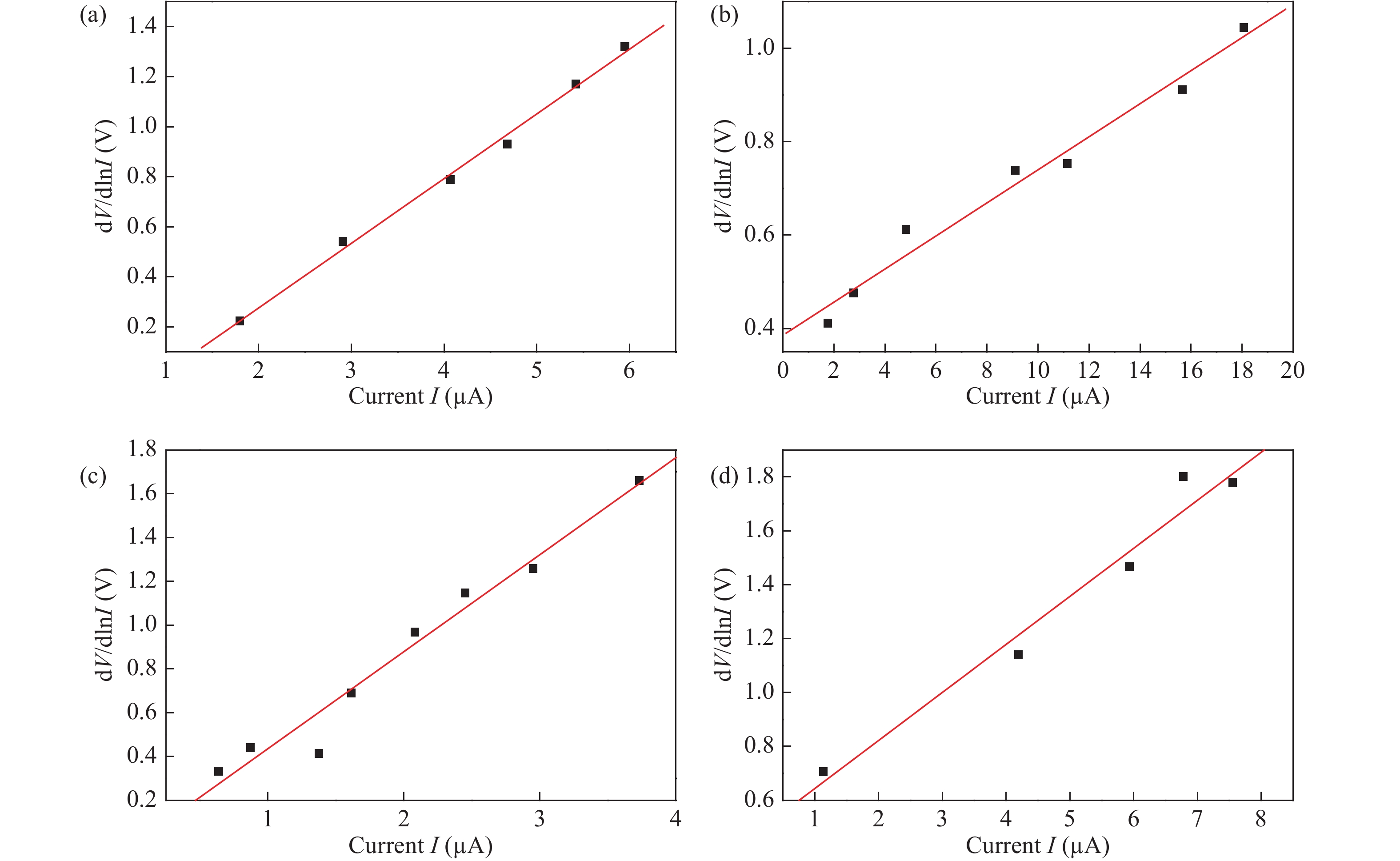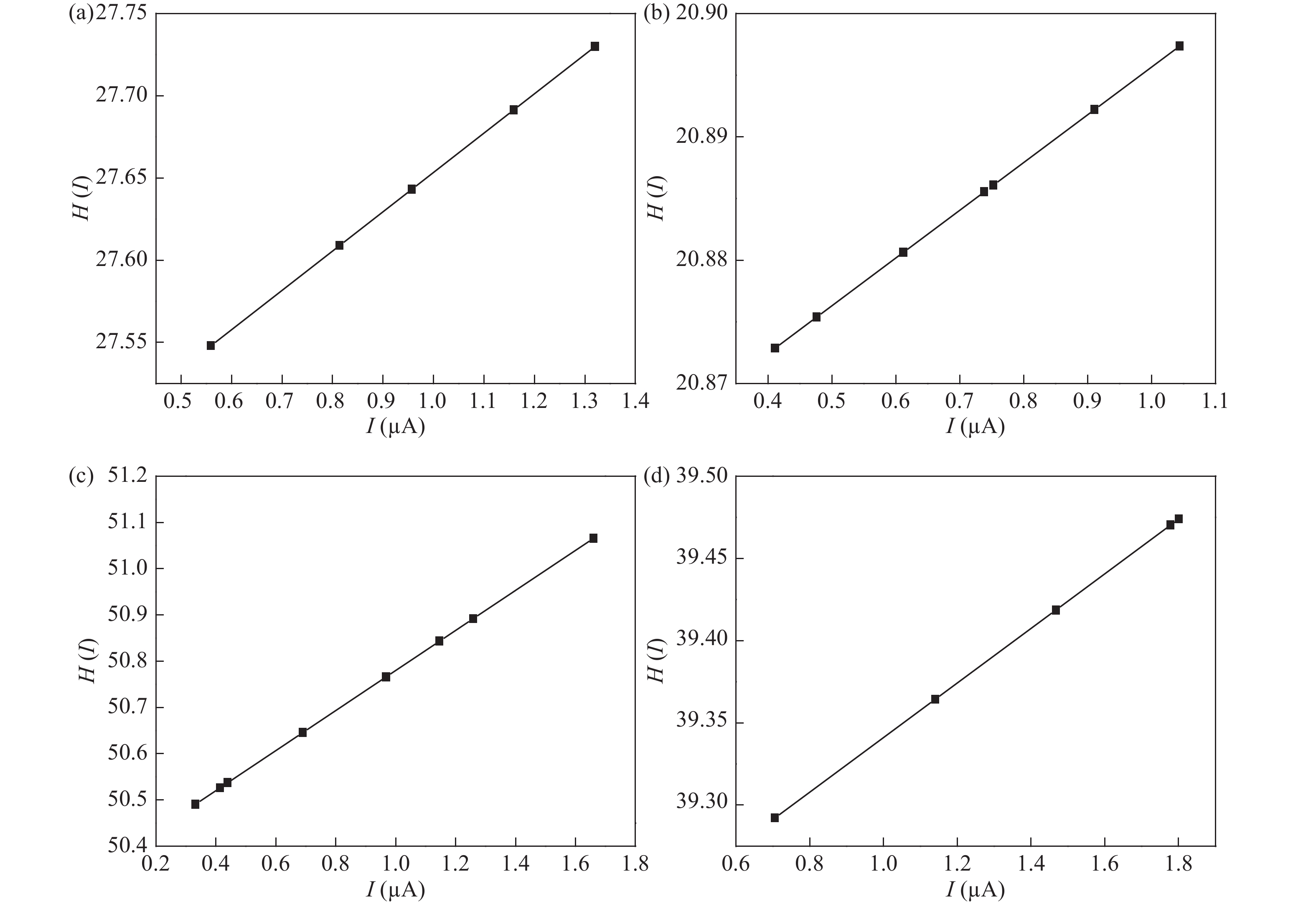| Citation: |
K. Chakraborty, S. Chakraborty, N. B. Manik. Effect of single walled carbon nanotubes on series resistance of Rose Bengal and Methyl Red dye-based organic photovoltaic device[J]. Journal of Semiconductors, 2018, 39(9): 094001. doi: 10.1088/1674-4926/39/9/094001
****
K. Chakraborty, S. Chakraborty, N. B. Manik, Effect of single walled carbon nanotubes on series resistance of Rose Bengal and Methyl Red dye-based organic photovoltaic device[J]. J. Semicond., 2018, 39(9): 094001. doi: 10.1088/1674-4926/39/9/094001.
|
Effect of single walled carbon nanotubes on series resistance of Rose Bengal and Methyl Red dye-based organic photovoltaic device
DOI: 10.1088/1674-4926/39/9/094001
More Information
-
Abstract
The influence of single walled carbon nanotube (SWCNT) on the series resistance (Rs) of Rose Bengal (RB) and Methyl Red (MR) dye-based organic diodes has been studied. It has been revealed from experimental results that SWCNT has a significant effect on Rs. The values of Rs are measured from current–voltage (I–V) characteristics and also by utilizing the Cheung method. Obtained values from the Cheung method have been verified using H(I)–I plots for all dye-based devices. The extracted values using these two processes show a good consistency with each other. It is observed that Rs is reduced significantly by incorporating SWCNT for both dyes. The estimated amounts of reduction of Rs using SWCNT are 76.08% and 64.23% obtained from the I–V relationship whereas the value of Rs shows a reduction of 83.5% and 67.1% when measured by using the Cheung method for RB and MR dyes respectively. The ideality factor and barrier height of the diodes have also been extracted. The ideality factor has decreased with incorporation of SWCNT. A reduction in barrier height for the devices has also been observed in the presence of SWCNT.-
Keywords:
- SWCNT,
- series resistance,
- OPV,
- barrier potential,
- ideality factor
-
References
[1] Brabec C J, Sariciftci N S, Hummelen J C. Plastic solar cells. Adv Funct Mater, 2001, 11: 15 doi: 10.1002/(ISSN)1616-3028[2] Kawano K, Sakai J, Yahiro M, et al. Effect of solvent on fabrication of active layers in organic solar cells based on poly (3-hexylthiophene) and fullerene derivatives. Sol Energy Mater Sol Cells, 2009, 93: 514 doi: 10.1016/j.solmat.2008.11.003[3] Yu G, Heeger A J. Charge separation and photovoltaic conversion in polymer composites with internal donor/acceptor heterojunctions. J Appl Phys, 1995, 78: 4510 doi: 10.1063/1.359792[4] Feron K, Belcher W, Fell C J, Dastoor P C. Organic solar cells: understanding the role of fórster resonance energy transfer. Int J Mol Sci, 2012, 13: 17019 doi: 10.3390/ijms131217019[5] Benanti T L, Venkataraman D. Organic solar cells: an overview focussing on active layer morphology. Photosynth Res, 2006, 87: 73 doi: 10.1007/s11120-005-6397-9[6] Haldar A, Maity S, Manik N B. Effect of back electrode on photovoltaic properties of crystal-violet-dye-doped solid-state thin film. Ionics, 2008, 14: 427 doi: 10.1007/s11581-007-0194-8[7] Kymakis E, Amaratunga G A J. Single-wall carbon nanotubes/conjugated polymer photovoltaic devices. Appl Phys Lett, 2002, 80: 112 doi: 10.1063/1.1428416[8] Khatri I, Adhikari S, Aryal H R, et al. Improving photovoltaic properties by incorporating both single walled carbon nanotubes and functionalized multi walled carbon nanotubes. Appl Phys Lett, 2009, 94: 093509 doi: 10.1063/1.3083544[9] Singh I, Bhatnagar P K, Mathur P C, et al. Optical and electrical characterization of conducting polymer single walled carbon nanotube composite films. Carbon, 2008, 46: 1141 doi: 10.1016/j.carbon.2008.04.013[10] Carr J A, Chaudhary S. On the identification of deeper defect levels in organic photovoltaic devices. J Appl Phys, 2013, 114: 064509 doi: 10.1063/1.4818324[11] Dey S K, Islam R, N. Non-exponential photocurrent growth and decay in safranine-T dye doped solid state polymer photo electrochemical cell. J Mater Sci, 2003, 38: 93 doi: 10.1023/A:1021165916651[12] Shah M, Karimov K S, Ahmad Z, et al. Electrical characteristics of A1/CNT/NiPc/PEPC/Ag surface-type cell. Chin Phys Lett, 2010, 27: 106102 doi: 10.1088/0256-307X/27/10/106102[13] Ghamdi A, Al-Hartomy O, Gupta R, et al. A DNA biosensor based interfsce states of a metal–insulator–semiconductor diode for biotechnology applications. Acta Physica Polonica, 2012, 121: 673 doi: 10.12693/APhysPolA.121.673[14] Shah M, Sayyad M H, Karimov Kh S, et al. Electrical characterization of ITO/NiPC/PEDOT:PSS junction diode. J Phys D, 2010, 43: 405104 doi: 10.1088/0022-3727/43/40/405104[15] Yakuphanoglu F. Controlling of silicon–insulator–metal junction by organic semiconductor polymer thin film. Synth Metals, 2010, 160: 1551 doi: 10.1016/j.synthmet.2010.05.024[16] Ates T, Tatar C, Yakuphanoglu F. Preparation of semiconductor ZnO powders byb sol–gel method: humidity sensors. Sen Actuat A, 2013, 190: 153 doi: 10.1016/j.sna.2012.11.031[17] Rakhshani A E. Heterojunction properties of electrodeposited CdTe/CdS solar cells. J Appl Phys, 2001, 90: 4265 doi: 10.1063/1.1397279[18] Cheung S K, Cheung N W. Extraction of Schottkey diode parameters from forward current–voltage characteristics. Appl Phys Lett, 1986, 49: 85 doi: 10.1063/1.97359[19] Chu T L. Reducing grain-boundary effects in polycrystalline silicon solar cells. Appl Phys Lett, 1976, 29: 675 doi: 10.1063/1.88898[20] Yakuphnoglu F, Shah M, Farooq W A. Electrical and interfacial properties of p-Si/P3HT organic junction barrier. Acta Physica Polonica A, 2011, 120: 558 doi: 10.12693/APhysPolA.120.558[21] Shah M, Sayyad M H, Karimov K S. Electrical characterization of the organic semiconductor Ag/CuPc/Au diode. J Semicond, 2011, 32: 044001 doi: 10.1088/1674-4926/32/4/044001[22] Jaber M H, Periasamy V, Mohd Amin Y. Electric properties of DNA-based Schottkey barrier diodes in response to alpha particles. Sensors, 2015, 15: 11836 doi: 10.3390/s150511836[23] Shen Y, Li K, Majumdar N, et al. Bulk and contact resistance in P3HT:PCBM heterojunction solar cells. Sol Energy Mater Sol Cells, 2011, 95: 2314 doi: 10.1016/j.solmat.2011.03.046[24] Law K Y. Organic photovoltaic materials: recent trends and developments. Chem Rev, 1993, 43: 449[25] Das U, Pal P P. ZnO1-xTex and ZnO1-xSx semiconductor alloys as competent materials for opto electronic and solar cell applications: a comparative analysis. J Semicond, 2017, 38: 082001 doi: 10.1088/1674-4926/38/8/082001[26] Mora J, Ospina J, Amaya D. Study and analysis of semiconductors for the development of two-layer solar cells. Int J Smart Home, 2015, 9: 263[27] Chakraborty S, Manik N B. Effect of single walled carbon nanotubes on the thresold voltage of dye based photovoltaic devices. Physica B, 481, 2016, 481: 209 doi: 10.1016/j.physb.2015.11.005[28] Scher H, Montroll E W. Anomalous transit-time dispersion in amorphous solids. Phys Rev B, 1975, 12: 2455[29] Dalapati P, Manik N B, Basu A N. Effect of temperature on the intensity and carrier lifetime of an AlGaAs based red light emitting diode. J Semicond, 2013, 34: 092001 doi: 10.1088/1674-4926/34/9/092001[30] Huang Y, Wu J, Gao D. High efficiancy perovskite solar cells based on anatase TiO2 nanotube arrays. Thin Solid Films, 2016, 598: 1 doi: 10.1016/j.tsf.2015.12.001[31] Sheikh A D, Bera A, Haque A, et al. Atmospheric effect on the Photovoltaic performance of hybrid perovskite solar cells. Sol Energy Mater Sol Cells, 2015, 137: 6 doi: 10.1016/j.solmat.2015.01.023[32] Ahmed Z, Sayyad M H. Electrical characteristics of a high rectification ratio organic Schottky diode based on Methyl red. Optoelectron Adv Mater, 2009, 3: 509[33] Landsberg P T, Klimpe C. Theory of the Schottky barrier solar cell. Pro R Soc, 1977, 354: 101 doi: 10.1098/rspa.1977.0058[34] Liu X, Zhang X W, Meng J H, et al. High efficiency Schottky junction solar cells by co-doping of graphene with gold nanoparticles and nitric acid. Appl Phys Lett, 2015, 233901: 106[35] Shanmugam M, Bansal T, Durcan C A, et al. Schottky solar cell based on layered semiconductor tungsten disulfide nanofilm. Appl Phys Lett, 2012, 263902: 101 -
Proportional views





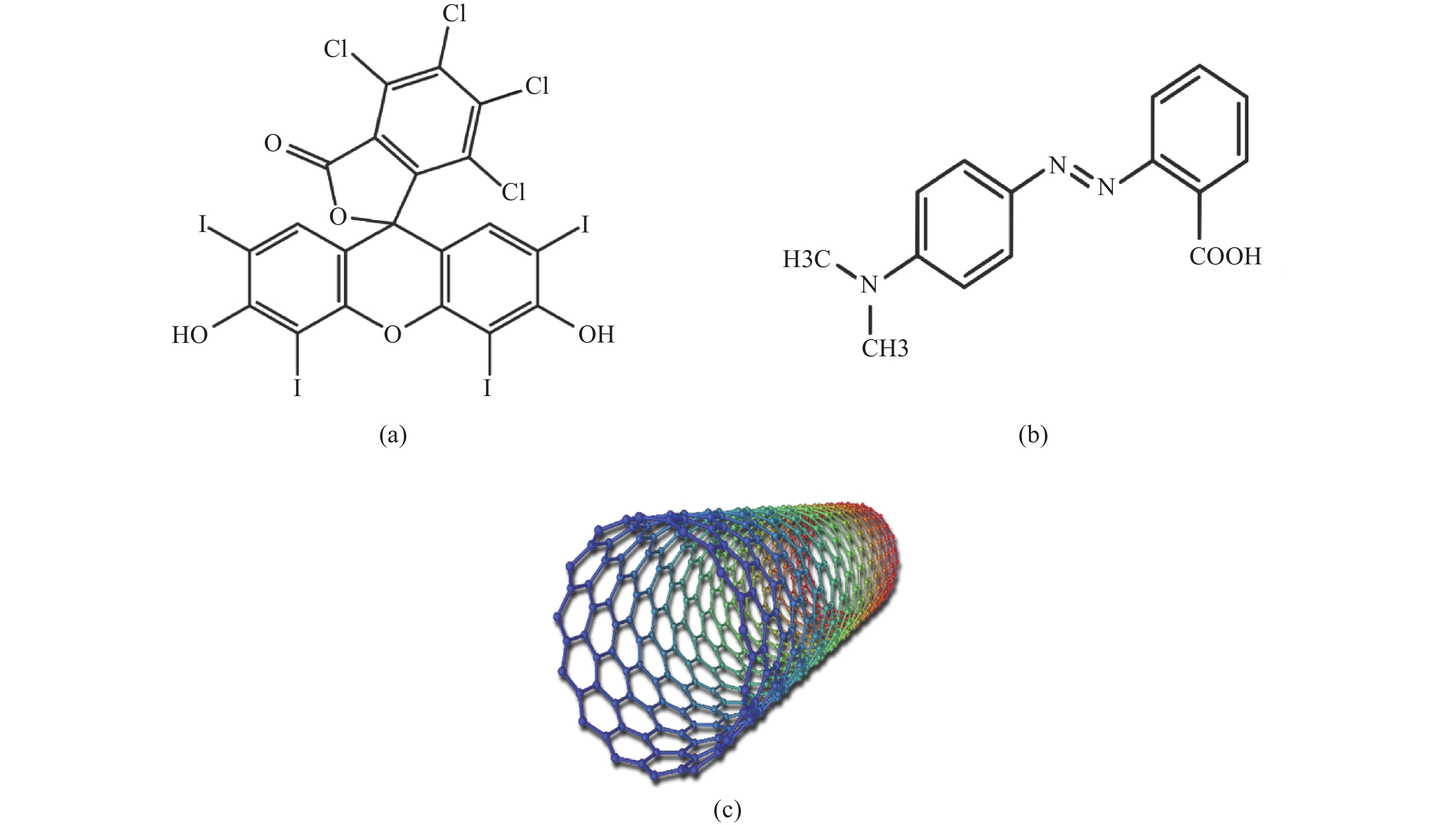
 DownLoad:
DownLoad:
